How To Grow The Highly Prized Desiree Potato, A Versatile Red-Skinned Cultivar
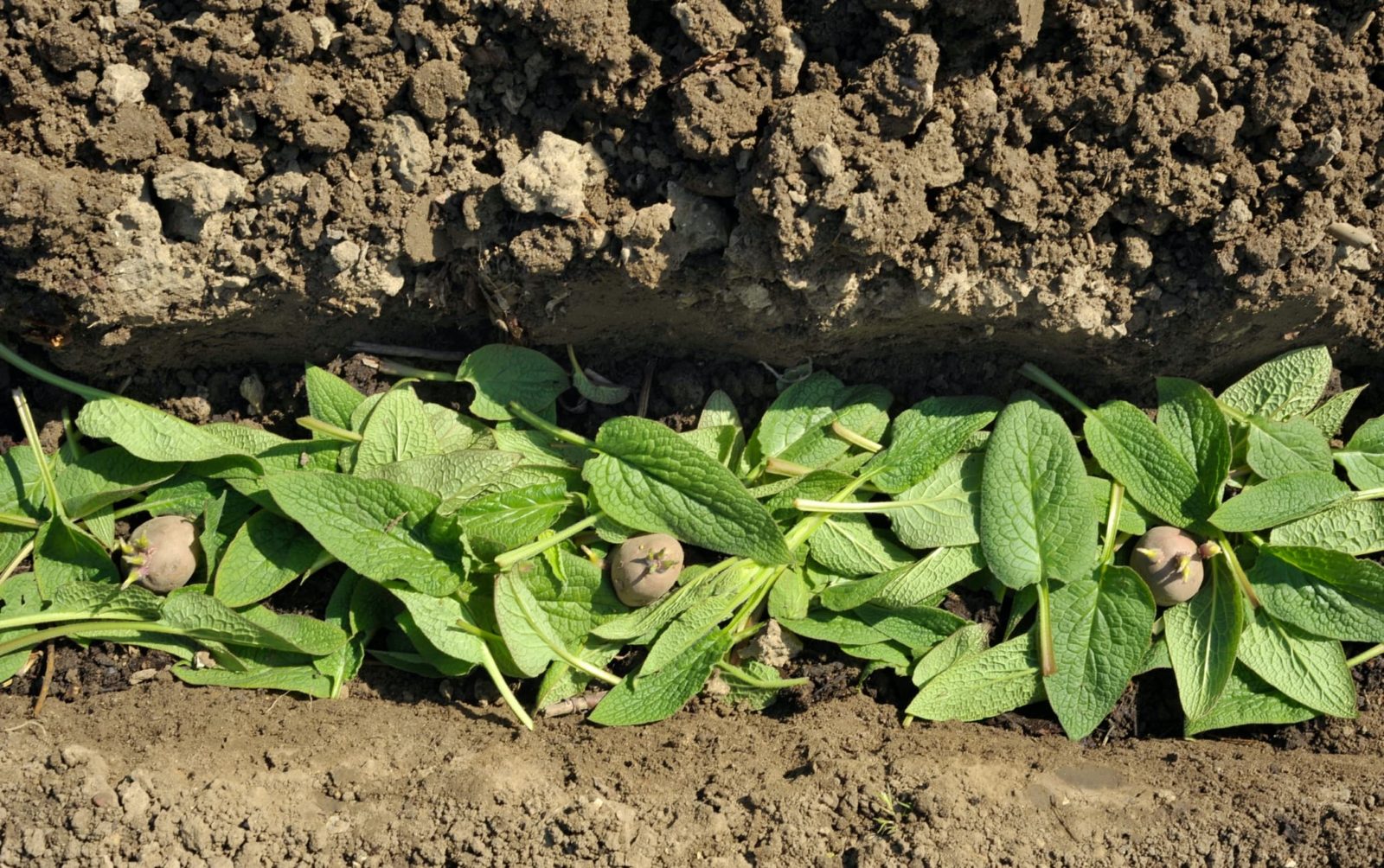
VEGETABLES > POTATOES > DESIREE

Elizabeth is a Permaculture Garden Designer, Sustainability Consultant and Professional Writer, working as an advocate for positive change. She graduated from the University of St. Andrews with an MA in English and Philosophy and obtained a Diploma in Applied Permaculture Design from the Permaculture Association.
Reviewed By COLIN SKELLY

Colin is a Horticulturist and Horticultural Consultant with experience in a range of practical and managerial roles across heritage, commercial and public horticulture. He holds the Royal Horticultural Society’s Master of Horticulture award and has a particular interest in horticultural ecology and naturalistic planting for habitat and climate resilience.
IN THIS GUIDE
POTATO GUIDES
Container Growing
Desiree Potatoes
Growing From Store Bought
Growing In Grow Bags
Potato Blight
Storage
Sweet Potatoes
Winter Cropping
‘Desiree’ potatoes are one of the most popular potato varieties for home growers in England and Wales.
It is a cultivar of red-skinned potato (Solanum tuberosum) usually used as the main-crop and is highly prized by gardeners and allotment holders.
The plant is of medium height, and can sprawl a little later on in its growing cycle; the flowers are reddish-violet, fading to white.
Overview
| Botanical Name | Solanum tuberosum ‘Desiree’ |
| Common Name(s) | Desiree Potato |
| Plant Type | Vegetable |
| Native Area | Netherlands |
| Hardiness Rating | H3-H4 |
| Foliage | Leafy green plants |
| Flowers | White flowers |
| When To Sow | March, April, May, June |
| Flowering Months | June, July, August |
| Harvesting Months | July, August, September, October |
Sunlight
Preferred
Full Sun / Light Shade
Exposure
Exposed or Sheltered
Size
Height
0.5 – 1M
Spread
0.5 – 1M
Bloom Time
June – August
Soil
Preferred
Most Soil Types
Moisture
Moist but well drained
pH
Neutral / Slightly Acidic
The tubers themselves are fairly large if left to mature to full size as a maincrop potato, but they can also be harvested a little early for an early maincrop if desired.
Desiree Pros
One of the main benefits of Desiree potatoes is that they have pretty good resistance to drought.
This means that they can be a good choice where water is short in summer, or where it is more difficult to ensure adequate irrigation or water as frequently as you should.

Another good thing about Desiree potatoes is that they have pretty good disease resistance.
This cultivar is immune to problems that can plague other varieties, such as potato wart and skin spot – and it also has good resistance against tuber late blight.
Another thing that many people like about this potato variety is that it is a fairly waxy potato, which has a lot of versatility in the kitchen.
It can be used for mashing, for chipping, for roasting, and in a range of other ways.
“I can’t grow ‘Desiree’ as it crops too late for my blight-prone garden, despite its greater resistance than other cultivars,” shares Master Horticulturist Colin Skelly.
“However, I would love to be able to due to it being a tasty all-rounder in the kitchen.”
Desiree Cons
While in general, the disease resistance of Desiree potatoes is better than many other varieties of potato, it is worthwhile noting that it can still encounter problems.
Though the tubers are generally fairly resistant to late blight, the foliage can be affected; leaf roll can also be a problem.
And this is not a potato which is resistant to common scab – so may not be the best variety to grow if this is a particular problem in your garden.
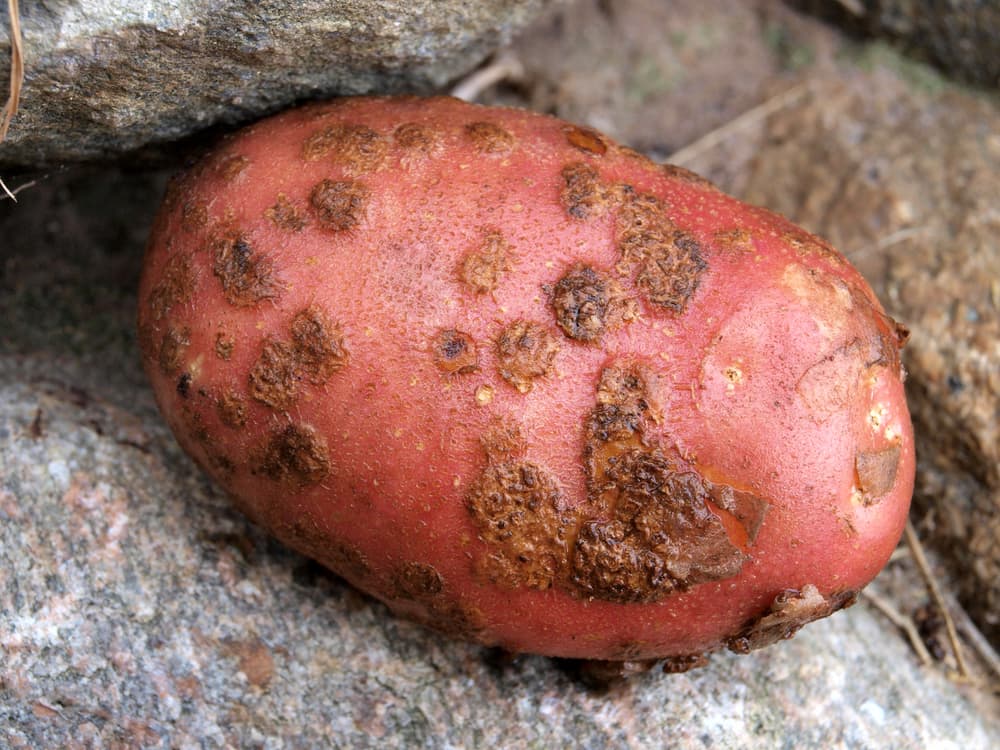
It also has a weakness to eelworms and potato cyst nematodes.
One very important thing to note is that while this can be a great option for gardeners in most of England and Wales, it does not do well in Scotland.
When grown in Scotland (where I live) the tubers can be watery and bland and yield very disappointing results.
If you live further north, or in a wetter area, you will likely be better off opting for a different variety.
Where To Find Them
If you do decide that Desiree potatoes are the right option for you, you should find that you have no difficulty at all in getting your hands on some good-quality seed potatoes.
The popularity of this variety means that they are widely available in garden centres, online, and in other stores.
Often, you can even find bargain seed potatoes of this type in affordable supermarket stores.
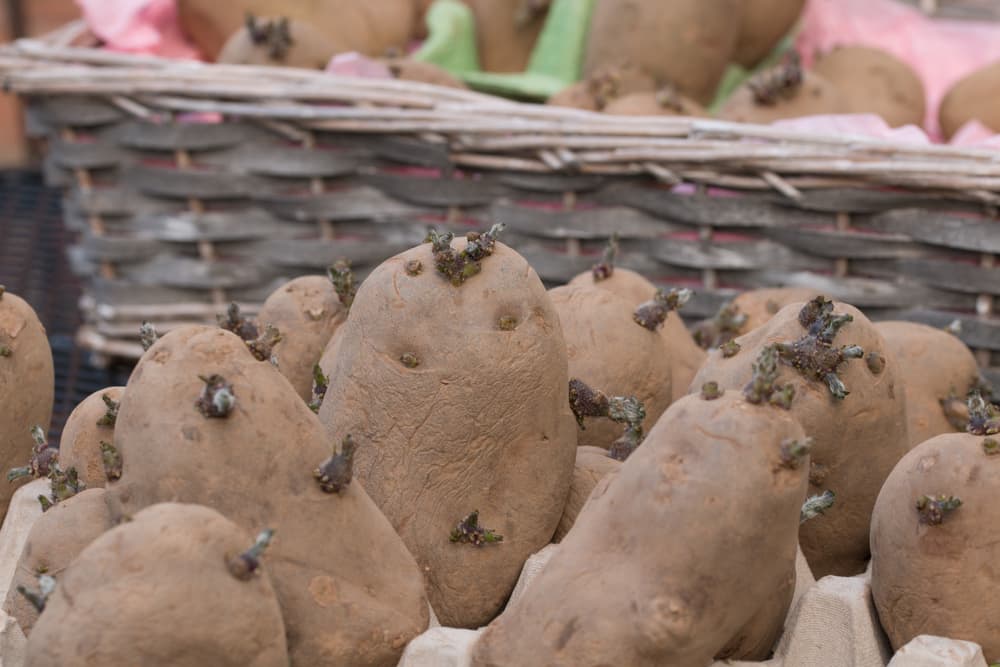
However, for best results, you should try to find seed suppliers from a certified, reputable supplier, so you know where they come from, and that they are pest and disease-free.
If you buy from a reputable supplier, you should get around 10-11 good-sized seed potatoes in one 1kg bag.
Where To Grow
Desiree potatoes can be grown in the ground or in containers, wherever other potatoes could be grown.
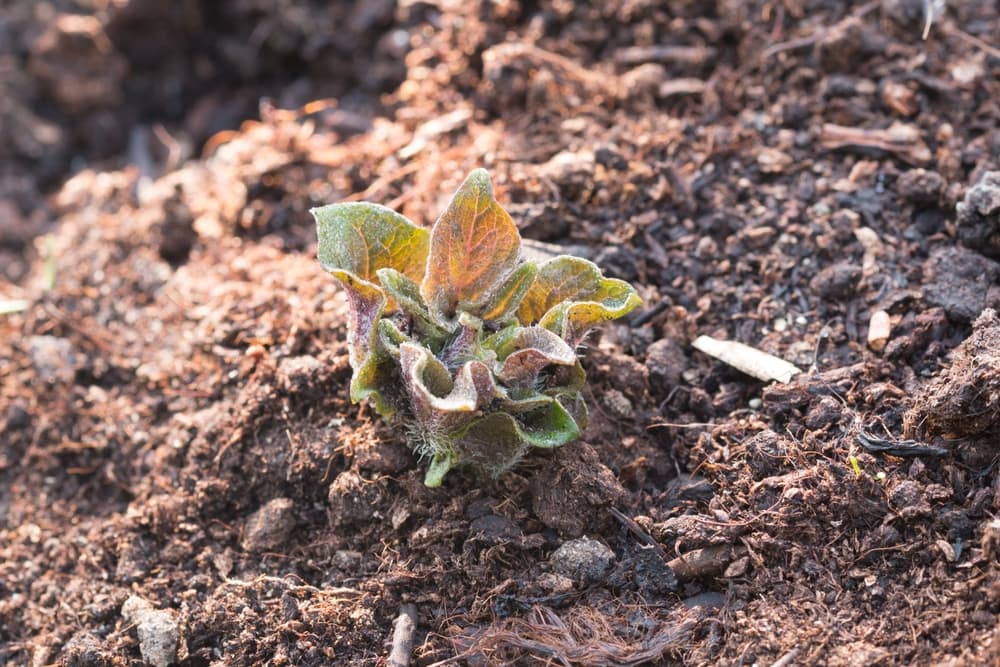
They will thrive in any soil which is fertile, moist yet moderately free draining, with plenty of organic matter – and will do best in full sun.
Potatoes will do well in any soil with a moderate pH, but do best in slightly acidic soil.
Planting Guidelines
Desiree potatoes, like other potatoes, can be chitted (left to form green shoots) before planting, though opinions differ on exactly how much difference this makes.

This variety is usually chitted from around the second half of February and then planted out less than a month before the last frost date in your area.
For most, the best time to plant outdoors will be late March or early April.
Desiree Plant Care
Care for Desiree potatoes does not differ from that of other potatoes.
You should keep the plants watered during dry periods if possible (though as noted above, this variety does have fairly good drought resistance).
You should ensure that the planting area is fertile, and that you take steps to maintain fertility over time.
Companion Planting
It is a good idea to consider not only which potato variety you will grow, but also which plants you will choose as companion plants for your potatoes.
Companion planting is a great idea in an organic garden and can help you obtain higher yields.
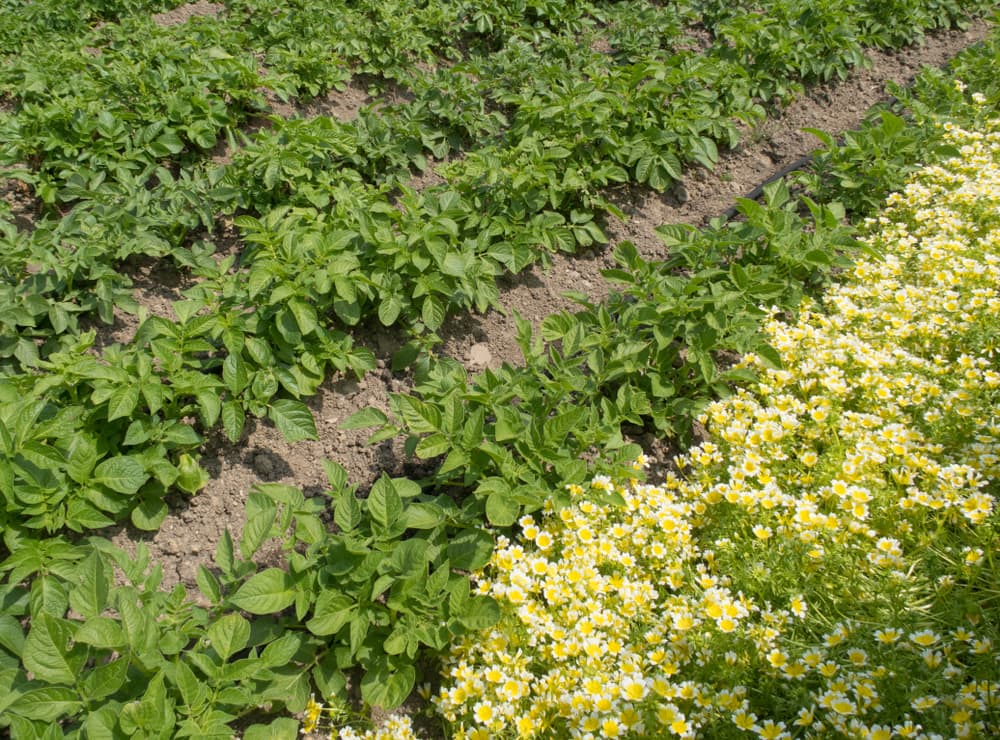
Some companion plants to consider include horseradish, garlic, onions or other alliums, peas or beans for nitrogen fixation, parsley, sage, thyme and other aromatic herbs, and flowers like marigolds, borage etc.
For the highest yields, we would also recommend that you adopt a no-dig gardening approach, and mulch well around your potato plants.
Potatoes in a no-dig garden bed are much easier to harvest.
Mulching
Mulch can be used as an alternative to earthing up around potatoes in the more traditional way.
Comfrey leaves make an excellent mulch for potato plants, for example.
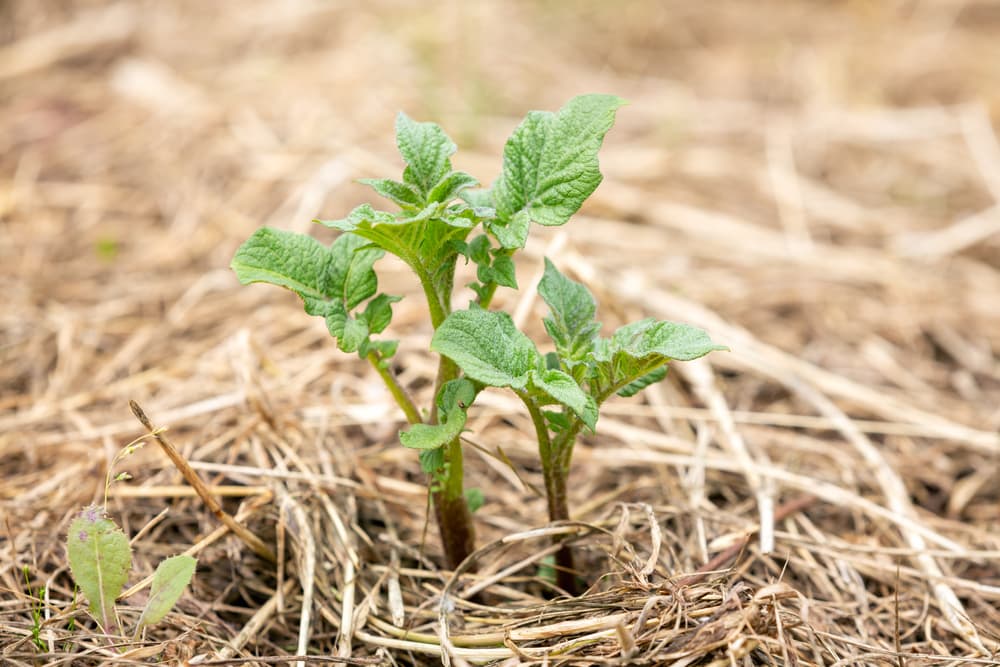
A comfrey liquid feed can also be beneficial, while I have also found that mulching with seaweed yields excellent results.
Though you should use natural mulch materials which are readily available in your area.
Harvesting
Desiree potatoes should be ready for harvest from around 16-18 weeks after they were planted.
You can expect these potatoes to be ready to harvest around the end of July, though this can vary considerably depending on conditions each year.

Make sure you store your potatoes properly to get the most out of your harvest.
Remember, Desiree potatoes are not the only option to consider – there are plenty of other interesting and versatile potato varieties to try.
For gardeners in most of England and Wales, they are certainly a good option to consider.
